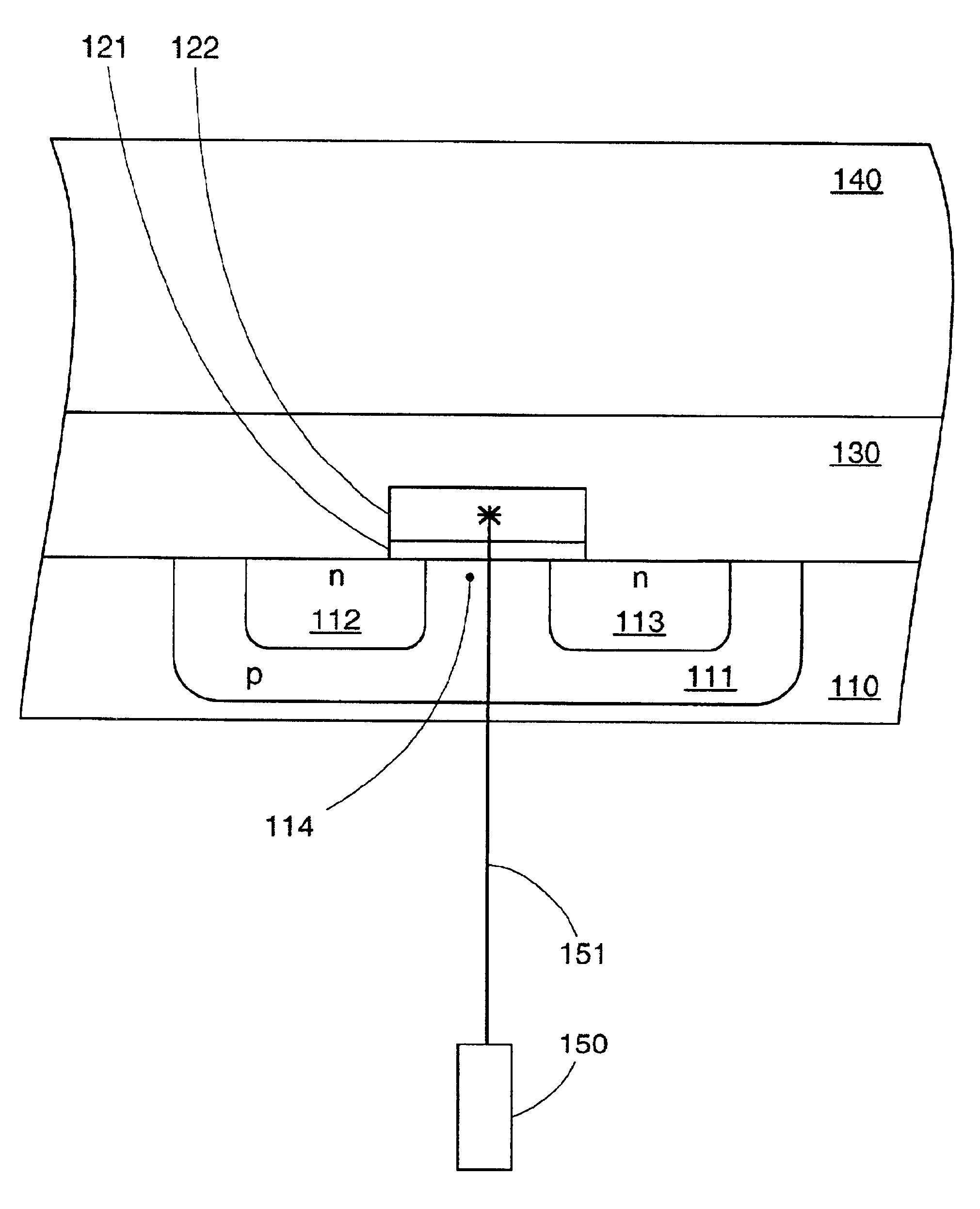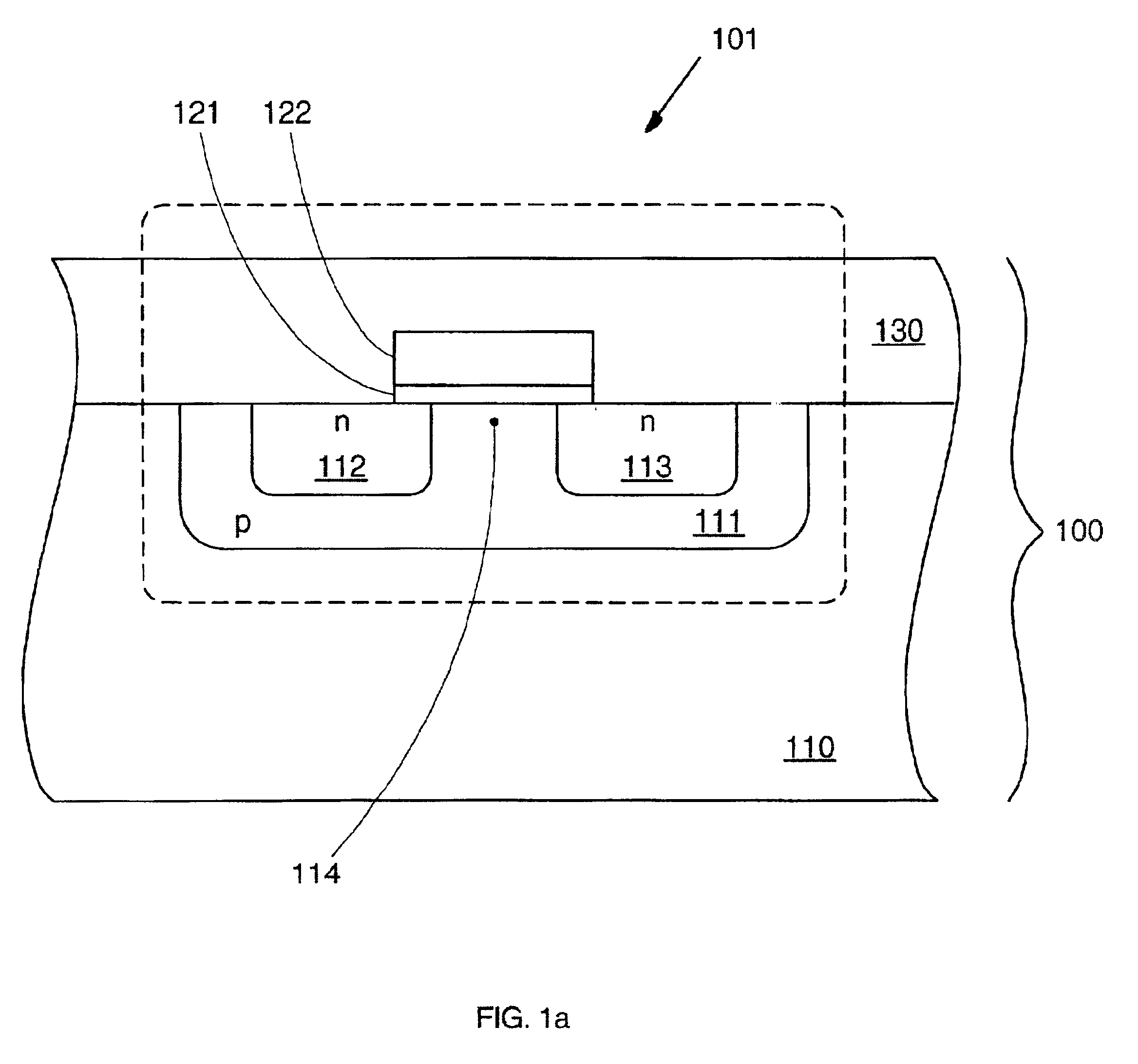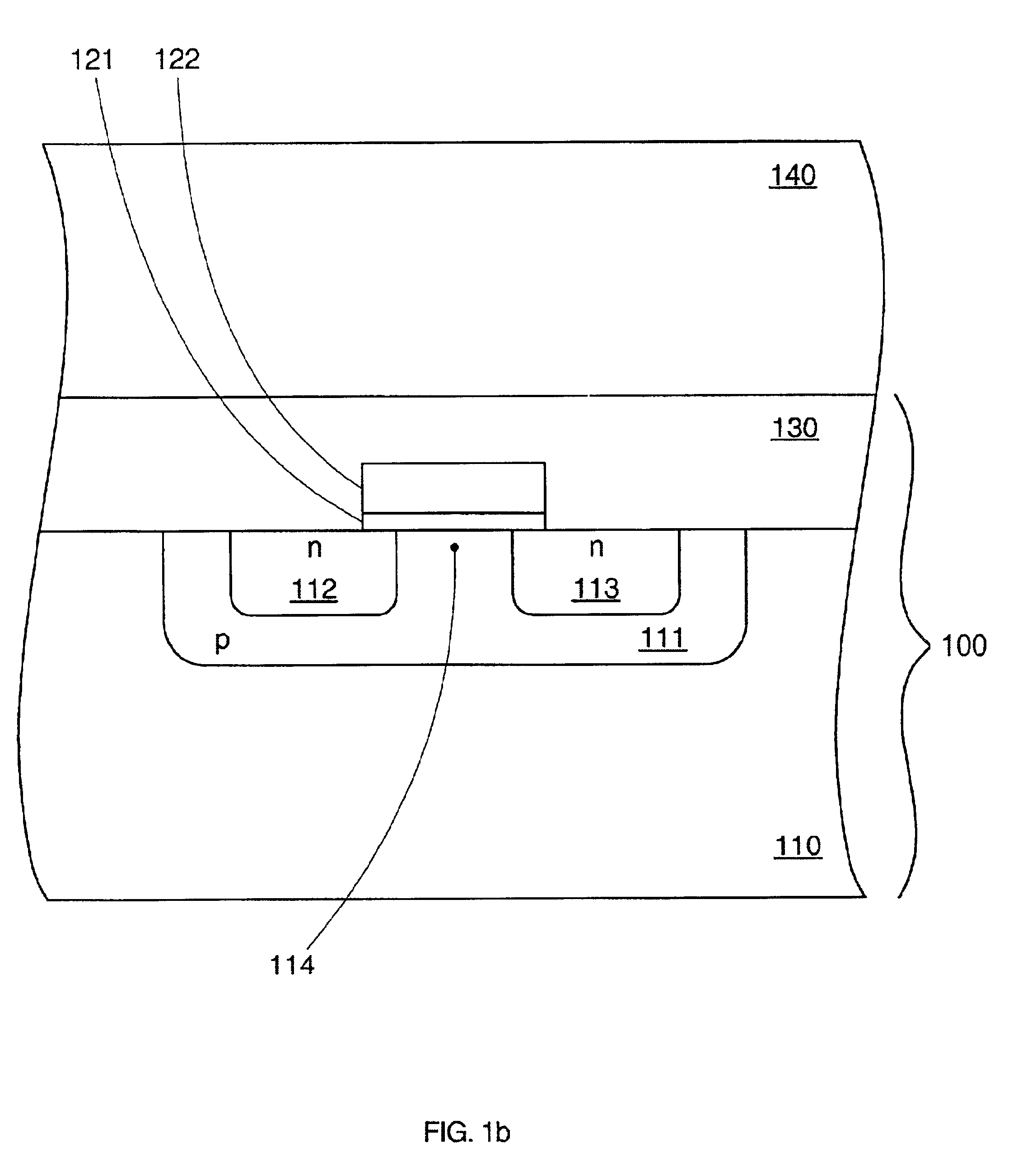Method to produce a factory programmable IC using standard IC wafers and the structure
a technology of ic wafers and factory programmable ic, which is applied in the direction of basic electric elements, electrical apparatus, semiconductor devices, etc., can solve the problems of not including non-volatile memory, not conducive to storing permanent device configuration data, and large user flexibility, so as to reduce the thickness of the wafer, reduce the difference in thermal conductivity between metal and silicon or silicon dioxide, and minimize heat flow
- Summary
- Abstract
- Description
- Claims
- Application Information
AI Technical Summary
Benefits of technology
Problems solved by technology
Method used
Image
Examples
Embodiment Construction
FIG. 1a shows a semiconductor element 101 formed as part of a processed semiconductor structure 100. Processed semiconductor structure 100 can comprise any type of semiconductor structure (e.g., FPGA wafers, memory wafers, etc.) formed using any type of semiconductor process (e.g., MOSFET, bipolar, etc.) and semiconductor technology (e.g., silicon, gallium arsenide, etc.).
Semiconductor element 101 comprises a metal-oxide-semiconductor (MOS) transistor located in a p-well 111 formed in a semiconductor substrate 110. Semiconductor substrate, 110 can comprise any support structure on which semiconductor elements can be formed, such as a silicon wafer, a glass or other insulating plate, or even a multi-layer structure such as an amorphous silicon layer formed on a metal sheet. Semiconductor element 101 comprises an n-type source 112 and an n-type drain 113, which are formed in p-well 111 and define a channel region 114. Semiconductor element 101 further comprises a gate oxide 121 over c...
PUM
 Login to View More
Login to View More Abstract
Description
Claims
Application Information
 Login to View More
Login to View More - R&D
- Intellectual Property
- Life Sciences
- Materials
- Tech Scout
- Unparalleled Data Quality
- Higher Quality Content
- 60% Fewer Hallucinations
Browse by: Latest US Patents, China's latest patents, Technical Efficacy Thesaurus, Application Domain, Technology Topic, Popular Technical Reports.
© 2025 PatSnap. All rights reserved.Legal|Privacy policy|Modern Slavery Act Transparency Statement|Sitemap|About US| Contact US: help@patsnap.com



